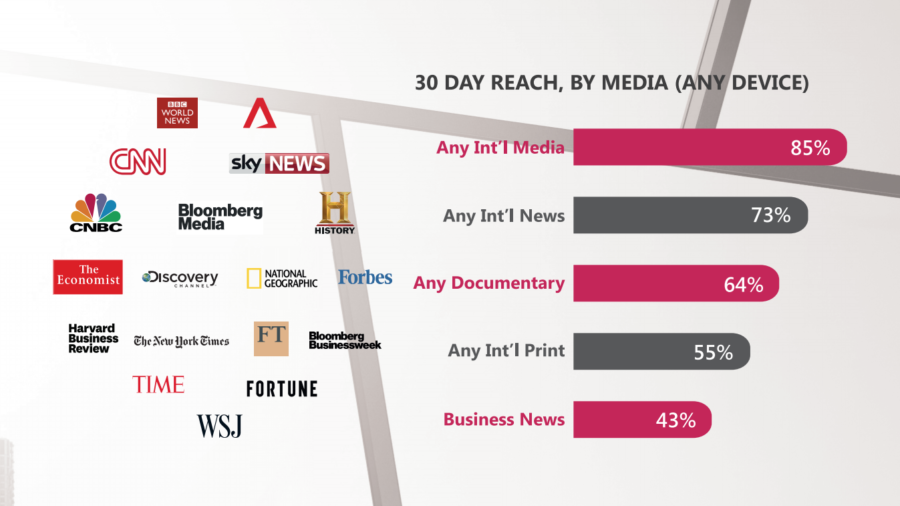Around the globe, ten million people fly internationally every week. Many of these comprise the high-end segments that brands and advertisers want to reach, from the mass-affluent through to the highest status elites. Rarely found on regular market research access panels, it is notoriously difficult to get usable insight data on such prospects, essential for effective brand engagement, whether you’re marketing Apple, BMW, HSBC, Rolex or Gucci.
International air travellers are of great interest to media owners and advertisers, especially for global campaigns. They tend to share common interests, education, aspirations and consumption habits. In many ways they are more similar to each other, regardless of origin, than to their own countrymen.
BDRC, an expanding global research consultancy, has launched its new Media Global Passenger Study (Media GPS) to meet this research challenge. Media GPS examines the media habits of 16,000 international air travellers, with a large proportion of businesspeople and expats. The outputs are invaluable for media owners, advertisers and media agencies.
The likes of CNN, Bloomberg and BBC Worldwide benefit from in-depth insight into the media consumption and buying habits of this influential group. It helps that they can link this media consumption to other characteristics. What of the views of C-suite executives travelling between North America and Asia? Exactly who spends more than $2,000 on jewellery and what media do they consume? How many of them have private bank accounts?
How effective is Media GPS in reality? Well, over a two year period BDRC has tested and refined a technology travel partnership giving it unique access to guaranteed air travellers recruited during their customer journey. This “in the moment” approach means travellers are surveyed at the point of travel, even in airport lounges with time on their hands.

Media GPS reveals which of 120-plus media brands and sub-brands these influential people engage with, across channels and devices. The knowledge that consumers are more open to new ideas, products and brands when travelling merely adds to the interest in this dataset.
Context, it is said, is all and this is as true for customer insight as for so much else in this world. Media GPS demonstrates that real depth of insight comes not just from asking the right questions, but from ensuring they are asked of the right audience and at the right moment in their customer experience.
With delivery of an exceptional customer service experience an increasing battleground as corporates vie for market share, context should be a by-word for any customer insight.
The knowledge that consumers are more open to new ideas, products and brands when travelling merely adds to the interest in this dataset
It is interesting to see how the vicissitudes of the customer response tend to “flatten out” the further the researcher moves from the time of the experience. There is also an “outcome bias” whereby the final destination can mask the ups and downs of the journey.
Ask a first-time house buyer after they have moved in how their mortgage application went and the evidence will be much less nuanced than if you asked them at each stage of the process. Memory is reconstructive not a photo album, so a happy ending leads us see it through rose-tinted glasses.
However, if we take the emotional temperature many times during the journey, the client – in this case, the mortgage provider – gets a detailed view on where and when they got it right or wrong. If wrong, they can put it right in future. If right, they can do more of it or just market it better.
BDRC’s clients increasingly want this granular “in the moment” insight and they want to know how they compare with the competition. This is as true for banks as for those managing hotels, retail portfolios and tourist attractions. While NPS (net promoter score) may be a valued customer engagement metric to report to the board, without the essential diagnostics on how your organisation might change its behaviour you’ve merely described the current condition without a programme for action.
